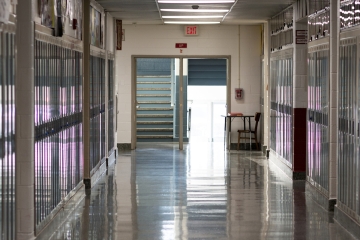Whether or not the bipartisan education consensus is dead, one of its most visible and effective reforms lives on: so-called “No Excuses” model schools, institutions famous for their exacting behavioral and academic standards. While most people know of these schools from national charter networks like KIPP or IDEA, many local schools and districts have followed their lead.
I recently began working at one such K–8 school, and so have gotten a unique look into what makes them work. The teacher-led instruction, rigid behavioral structure, and knowledge-based curriculum are certainly aspects of its success. But an often less-remarked cause for the success of the No Excuses model is the role of a coherent culture and uniform vision within these schools.
I first noticed the difference in school culture in hearing other teachers refer to students as “scholars”—a practice common in No Excuse schools. I’m still not entirely comfortable with this. It feels contrived. But looking at the word’s origins—from the Latin “schola”—it is fitting. More importantly, there’s a purpose to calling all students “scholars.” It establishes a tone. It communicates to students who attend this school that they are here for more than babysitting or socialization. This simple shift in language signals to these kids that they are in this building for a serious academic undertaking.
Everything that a school does sends signals to students—what behavior is sanctioned or rewarded, what books students read, who designs curriculum, which posters hang on the wall. Every tiny decision communicates values and the vision to those within its walls. What does this school value? What does it mean to be educated? What is proper behavior? Good character?
Nobel laureate George Akerlof wrote a compelling essay on the role of identity in schooling, namely whether students identify as nerds, jocks, burnouts, or otherwise. Schools communicate an ideal to students who then “choose whether or not to adopt the school’s social category.”
No Excuses schools succeed within this reality. In my own school, we have regular pep assemblies to cast an academic vision for students and explain various policies, teachers name classrooms after colleges, we spend our first week practicing and justifying various routines and procedures, we refer to students as scholars, and are encouraged to post data walls up in our rooms, tracking students’ growth on various tests and standards. The ideal of an academically minded student is set forth constantly and intentionally.
But setting forth an ideal is insufficient. As Akerlof notes, students may reject it. Often, this rejection comes when they see such an ideal as unattainable. For example, if their prior schooling was lacking, they might worry about failing to reach the ideal and so, in a face-saving decision, choose to reject the institution’s values.
And so these No Excuses schools pair an academic ideal with excellence in curriculum and instruction. Administrations coach teachers constantly. Teachers review data to modify instruction. Curricula are sequenced, knowledge-based, and rigorous. These factors provide students a near-guarantee of reaching the ideal, so they’re less likely to reject it.
Akerlof points to this identity thesis as a factor that promotes the success of Catholic schools, in which I have also worked. “These schools make their ideals clear,” he writes, and “all the teachers assume responsibility for shaping student character.” Because of their religious nature and ties to a dogmatic church, these institutions clearly communicate expectations to students, and teachers foster and advance those ideals.
This understanding of schooling and identity also informs the success of school choice. Both families and teachers can opt into schools that align with their values or ideal education, and so schools have a stronger mandate to advance one coherent vision.
In his studies of the successes and failures of charter schools, Harvard economist Roland Fryer has confirmed Akerlof’s predictions. He found five factors that successful charter schools had in common. A culture of high expectations was chief among them, a factor that can manifest beyond the walls of No Excuses charter schools. As such, he not only identifies this culture of high expectations as a factor in success, but also isolates ways that other schools can adopt these practices:
The first week of school should be a “culture camp,” a time to focus on what behaviors and actions are conducive to achieving success. Classrooms should post goals on the walls as a constant reminder of the high expectations, and schools should visibly promote a culture of going to college by hanging posters about college and by discussing college readiness with students. Students must be cognizant of their individual goals and the steps needed to achieve them.
I compare that to other public schools where I’ve worked. The messages sent to students were a hodgepodge. Even the curriculum was a messy mix of student-led and teacher-led approaches. Behavioral expectations varied from classroom to classroom. My colleague across the hall and I disagreed on just about every issue one could bring up in education. We enjoyed debating that disagreement, but it’s akin to asking a church to advance Catholic, Protestant, Jewish, and Muslim doctrines while expecting a coherent result.
With the back-to-school season upon us, and America’s students desperately in need of excellent instruction to address their massive Covid-era learning losses, such an ecumenical approach to school culture is not going to cut it. Districts either need to adopt and enforce a uniform vision for all their schools or embrace a meaningful approach to school choice to allow each campus to go its own way. But leaving questions of vision, identity, and culture to individual teachers is a recipe for stagnation, which our kids cannot afford.








